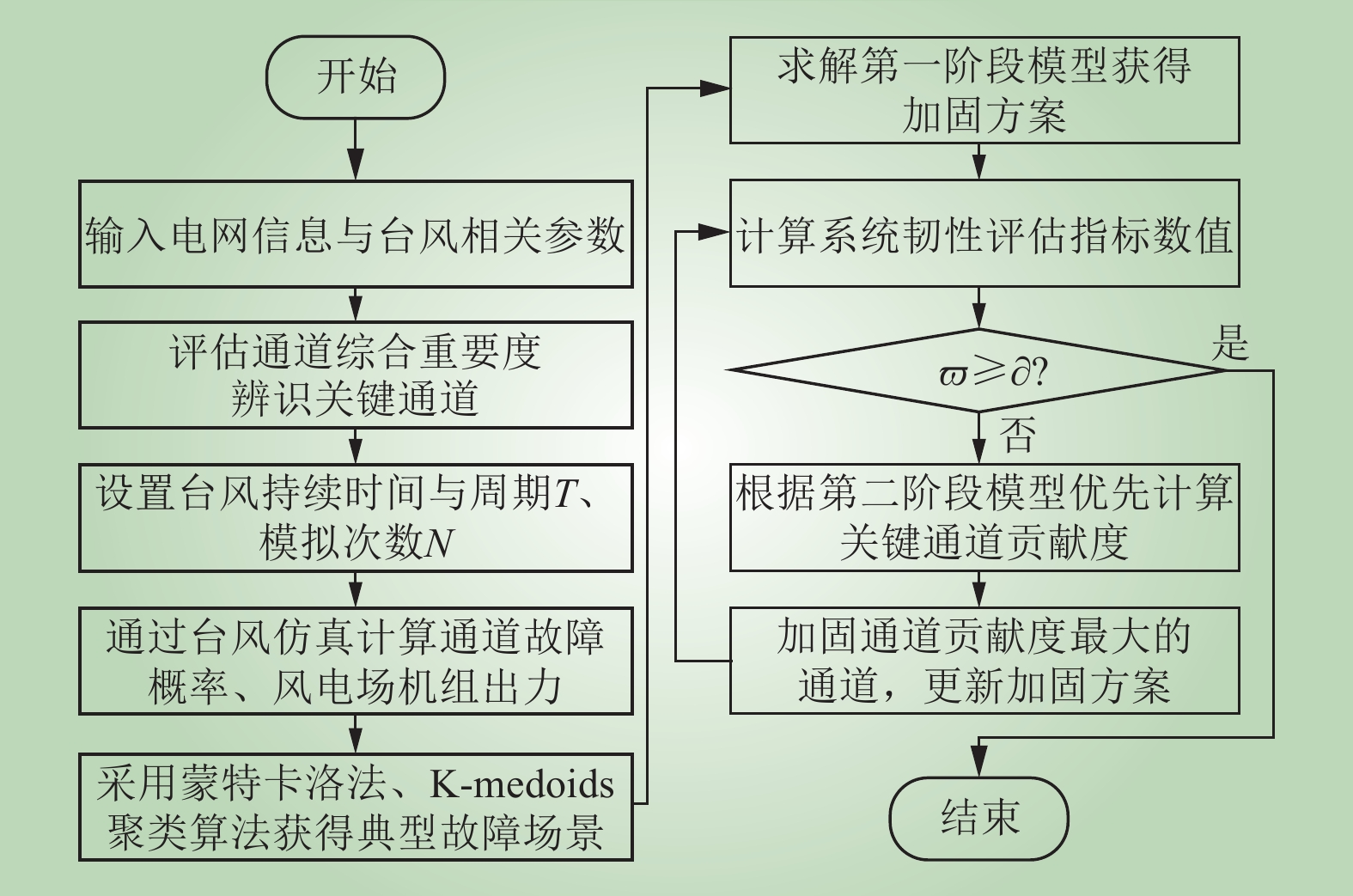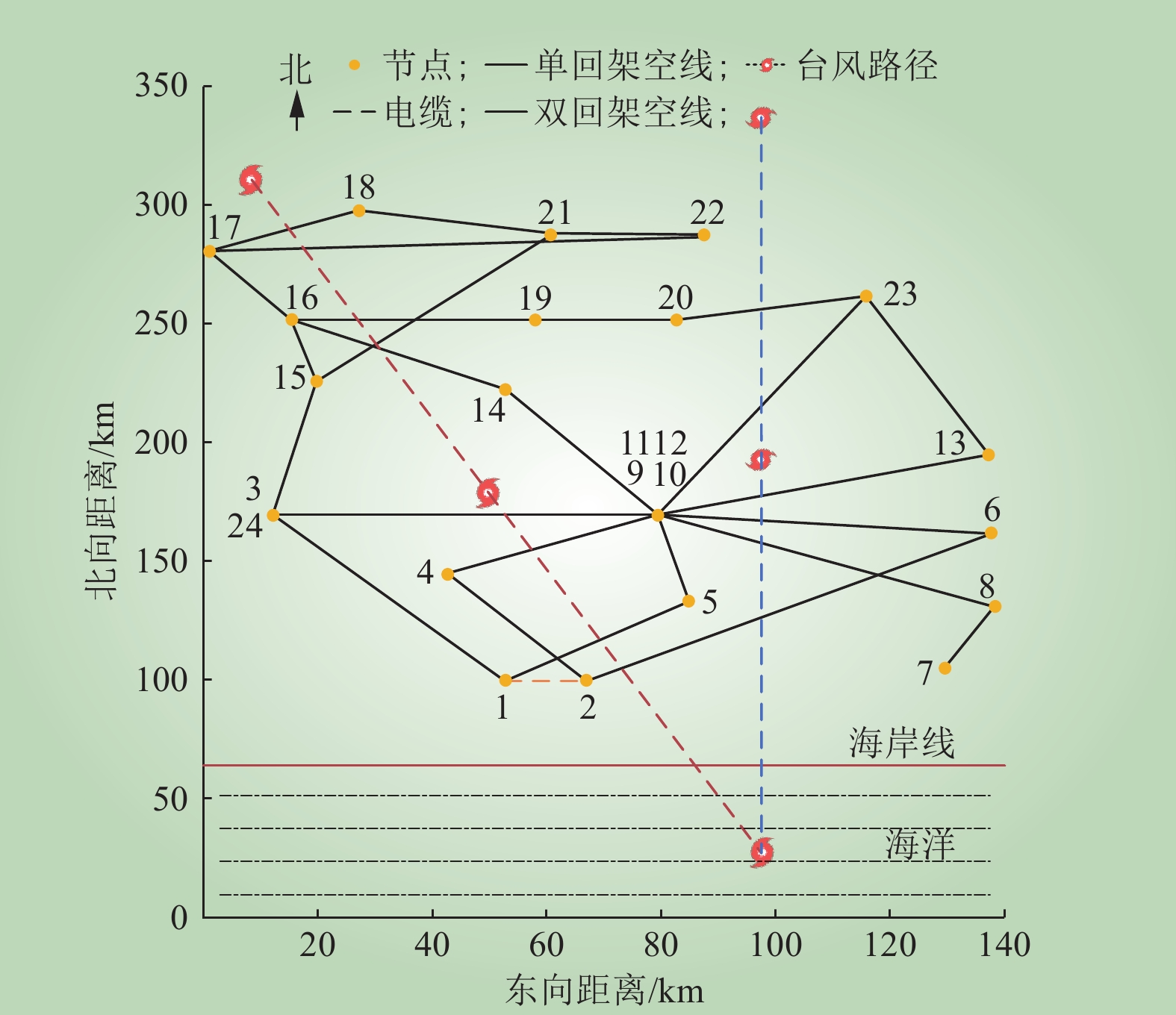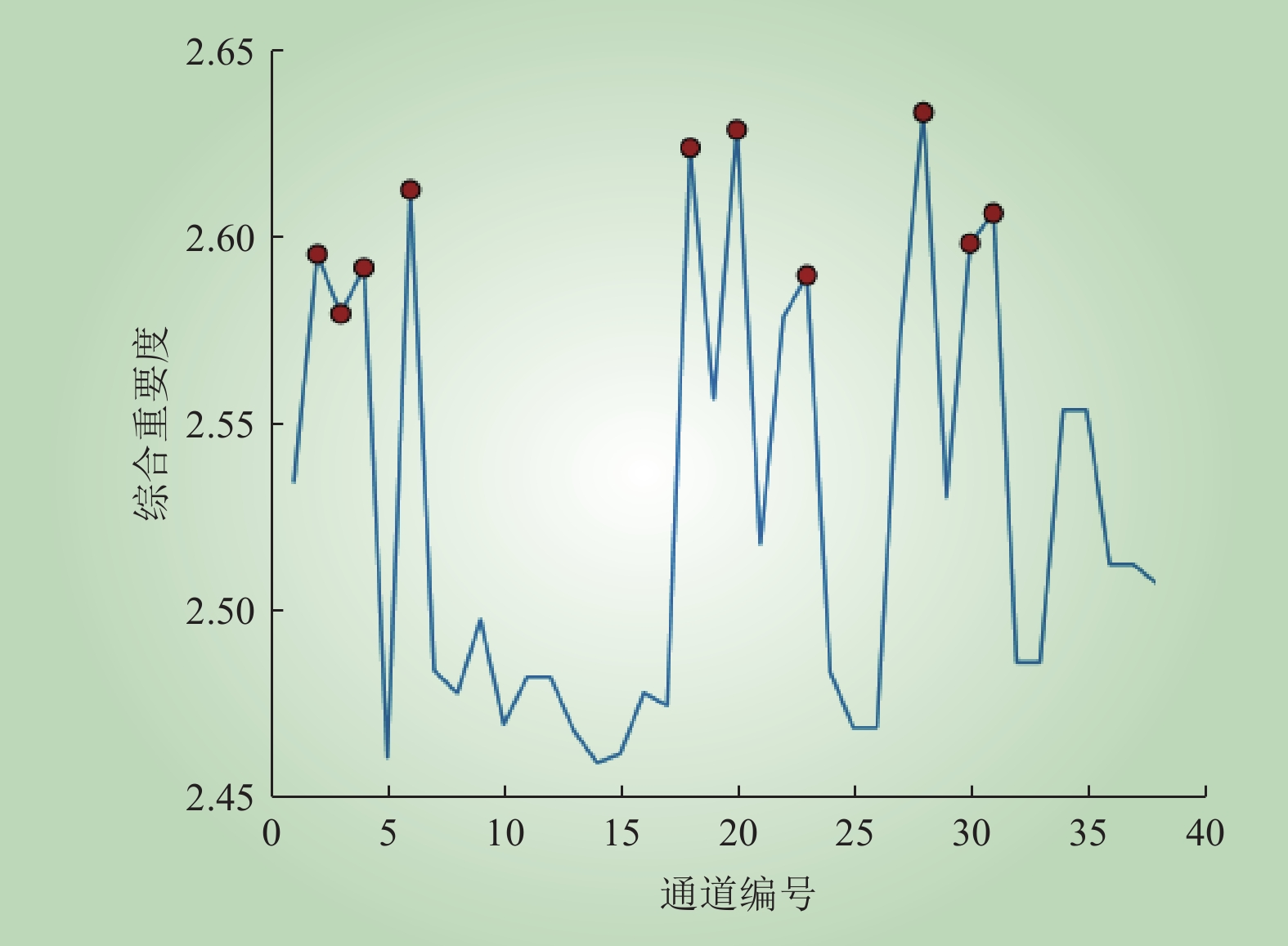| 1 |
罗萍萍, 盛奥, 林济铿, 等. 基于CGAN台风气象下负荷场景生成[J]. 中国电力, 2025, 58 (2): 176- 185.
|
|
LUO Pingping, SHENG Ao, LIN Jikeng, et al. Load scenario generation under typhoon meteorology based on CGAN[J]. Electric Power, 2025, 58 (2): 176- 185.
|
| 2 |
汤耀景, 林雅, 张彩友, 等. 考虑台风动态过程的电网故障路径分析方法[J]. 电网与清洁能源, 2024, 40 (2): 119- 126.
DOI
|
|
TANG Yaojing, LIN Ya, ZHANG Caiyou, et al. Analysis method of power grid fault paths considering the dynamic process of typhoons[J]. Power System and Clean Energy, 2024, 40 (2): 119- 126.
DOI
|
| 3 |
王振国, 康丽莉, 李特, 等. 浙江沿海地区台风灾害风险区域划分研究[J]. 浙江电力, 2024, 43 (3): 28- 37.
|
|
WANG Zhenguo, KANG Lili, LI Te, et al. A study on typhoon disaster risk zoning in Zhejiang coastal areas[J]. Zhejiang Electric Power, 2024, 43 (3): 28- 37.
|
| 4 |
倪杰, 李晨, 秦天, 等. 基于多源数据融合的电网计划安全稳定校核技术研究[J]. 综合智慧能源, 2023, 45 (6): 42- 50.
DOI
|
|
NI Jie, LI Chen, QIN Tian, et al. Research on security and stability verification technology for power grid planning based on multi-source data fusion[J]. Integrated Intelligent Energy, 2023, 45 (6): 42- 50.
DOI
|
| 5 |
谢善益, 杨强, 谢恩彦, 等. 考虑受端电网运行安全的台风条件下海上风电场协调运行策略[J]. 浙江电力, 2023, 42 (10): 17- 24.
|
|
XIE Shanyi, YANG Qiang, XIE Enyan, et al. The coordinated operation strategy for offshore wind farms with energy storage under typhoon conditions considering the operation safety demand of receiver grid[J]. Zhejiang Electric Power, 2023, 42 (10): 17- 24.
|
| 6 |
YANG Y H, TANG W H, LIU Y, et al. Quantitative resilience assessment for power transmission systems under typhoon weather[J]. IEEE Access, 2018, 6, 40747- 40756.
DOI
|
| 7 |
BAGHERI A, ZHAO C Y, QIU F, et al. Resilient transmission hardening planning in a high renewable penetration era[J]. IEEE Transactions on Power Systems, 2019, 34 (2): 873- 882.
DOI
|
| 8 |
HUANG Z H, ZHANG Y C, XIE S W. A comprehensive strategy for the distribution network resilience enhancement considering the time-varying behaviors of typhoon path[J]. Electric Power Systems Research, 2023, 214, 108819.
DOI
|
| 9 |
SALMAN A M, LI Y, STEWART M G. Evaluating system reliability and targeted hardening strategies of power distribution systems subjected to hurricanes[J]. Reliability Engineering & System Safety, 2015, 144, 319- 333.
|
| 10 |
杜敏, 刘绚, 周元刚. 考虑极端事件下的高比例可再生能源电力系统韧性增强策略[J]. 电力系统自动化, 2023, 47 (12): 19- 27.
DOI
|
|
DU Min, LIU Xuan, ZHOU Yuangang. Resilience enhancement strategy for power system with high proportion of renewable energy considering extreme events[J]. Automation of Electric Power Systems, 2023, 47 (12): 19- 27.
DOI
|
| 11 |
王子昊, 王旭, 蒋传文, 等. 基于近端策略优化算法的灾后配电网韧性提升方法[J]. 电力系统自动化, 2022, 46 (21): 62- 70.
DOI
|
|
WANG Zihao, WANG Xu, JIANG Chuanwen, et al. Resilience improvement method for post-disaster distribution network based on proximal policy optimization algorithm[J]. Automation of Electric Power Systems, 2022, 46 (21): 62- 70.
DOI
|
| 12 |
张娟, 童晓阳, 姜建伟. 基于点渗流和熵权法的连锁故障路径风险评估[J]. 电力系统及其自动化学报, 2018, 30 (2): 20- 25.
DOI
|
|
ZHANG Juan, TONG Xiaoyang, JIANG Jianwei. Risk assessment on cascading failure path based on site percolation and entropy weight method[J]. Proceedings of the CSU-EPSA, 2018, 30 (2): 20- 25.
DOI
|
| 13 |
赵源上, 林伟芳. 基于皮尔逊相关系数融合密度峰值和熵权法典型场景研究[J]. 中国电力, 2023, 56 (5): 193- 202.
|
|
ZHAO Yuanshang, LIN Weifang. Research on typical scenarios based on fusion density peak value and entropy weight method of Pearson's correlation coefficient[J]. Electric Power, 2023, 56 (5): 193- 202.
|
| 14 |
BATTS M E, SIMIU E, RUSSELL L R. Hurricane wind speeds in the United States[J]. Journal of the Structural Division, 1980, 106 (10): 2001- 2016.
DOI
|
| 15 |
VICKERY P J, WADHERA D, TWISDALE L A Jr, et al. U. S. hurricane wind speed risk and uncertainty[J]. Journal of Structural Engineering, 2009, 135 (3): 301- 320.
DOI
|
| 16 |
黄大为, 李子安, 孔令国. 台风灾害下提升电网韧性的实时优化调度策略[J]. 东北电力大学学报, 2024, 44 (3): 112- 120.
|
|
HUANG Dawei, LI Zian, KONG Lingguo. Real-time optimal dispatching strategy for improving power grid resilience under typhoon disaster[J]. Journal of Northeast Electric Power University, 2024, 44 (3): 112- 120.
|
| 17 |
LIU X N, HOU K, JIA H J, et al. A planning-oriented resilience assessment framework for transmission systems under typhoon disasters[J]. IEEE Transactions on Smart Grid, 2020, 11 (6): 5431- 5441.
DOI
|
| 18 |
PANTELI M, PICKERING C, WILKINSON S, et al. Power system resilience to extreme weather: fragility modeling, probabilistic impact assessment, and adaptation measures[J]. IEEE Transactions on Power Systems, 2017, 32 (5): 3747- 3757.
DOI
|
| 19 |
宋晓喆, 汪震, 甘德强, 等. 台风天气条件下的电网暂态稳定风险评估[J]. 电力系统保护与控制, 2012, 40 (24): 1- 8.
DOI
|
|
SONG Xiaozhe, WANG Zhen, GAN Deqiang, et al. Transient stability risk assessment of power grid under typhoon weather[J]. Power System Protection and Control, 2012, 40 (24): 1- 8.
DOI
|
| 20 |
MABEL M C, RAJ R E, FERNANDEZ E. Adequacy evaluation of wind power generation systems[J]. Energy, 2010, 35 (12): 5217- 5222.
DOI
|
| 21 |
ZHANG H J, CHENG L, YAO S H, et al. Spatial–temporal reliability and damage assessment of transmission networks under hurricanes[J]. IEEE Transactions on Smart Grid, 2020, 11 (2): 1044- 1054.
DOI
|
| 22 |
ZHANG H, CHENG H Z, LIU L, et al. Coordination of generation, transmission and reactive power sources expansion planning with high penetration of wind power[J]. International Journal of Electrical Power & Energy Systems, 2019, 108, 191- 203.
|








